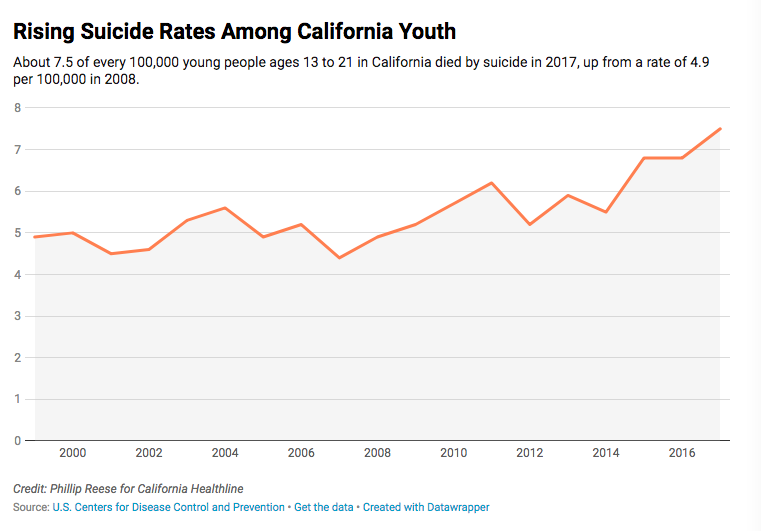One of the most startling trends in American health care is the rate at which adolescents are seeking care for mental health issues. New data reported by Kaiser Health News reveals that California is experiencing a sharp increase in emergency room use from individuals who are suffering from mental health issues:
ERs throughout California are reporting a sharp increase in adolescents and young adults seeking care for a mental health crisis. In 2018, California ERs treated 84,584 young patients ages 13 to 21 who had a primary diagnosis involving mental health. That is up from 59,705 in 2012, a 42% increase, according to data provided by the Office of Statewide Health Planning and Development.
By comparison, the number of ER encounters among that age group for all other diagnoses grew by just 4% over the same period. And the number of ER encounters involving mental health among all other age groups — everyone except adolescents and young adults — rose by about 18%.
The spike in youth mental health visits corresponds with a recent survey that found that members of “Generation Z” — defined in the survey as people born since 1997 — are more likely than other generations to report their mental health as fair or poor. The 2018 polling, done on behalf of the American Psychological Association, also found that members of Generation Z, along with millennials, are more likely to report receiving treatment for mental health issues.
The trend corresponds with another alarming development, as well: a marked increase in suicides among teens and young adults. About 7.5 of every 100,000 young people ages 13 to 21 in California died by suicide in 2017, up from a rate of 4.9 per 100,000 in 2008, according to the latest figures from the U.S. Centers for Disease Control and Prevention. Nationwide, suicides in that age range rose from 7.2 to 11.3 per 100,000 from 2008 to 2017.
I wrote about this issue for the Carolina Journal. I speculate that as the youth population spends less time interacting with peers and the community, feelings of loneliness increase which creates more mental health issues. I believe that screen time is one of the main culprits. As the youngest generations sacrifice face-to-face time with friends and family for screen time, social capital erodes.
Kristen Blair, a Chapel Hill-based education writer, has written about this trend as well, discussing the effect of cell phones on one’s brain as well as the link between loneliness and bullying.
This issue is not going away. There are broader implications for generational health and our country’s healthcare spending as this trend continues and begins to affect more young individuals.




